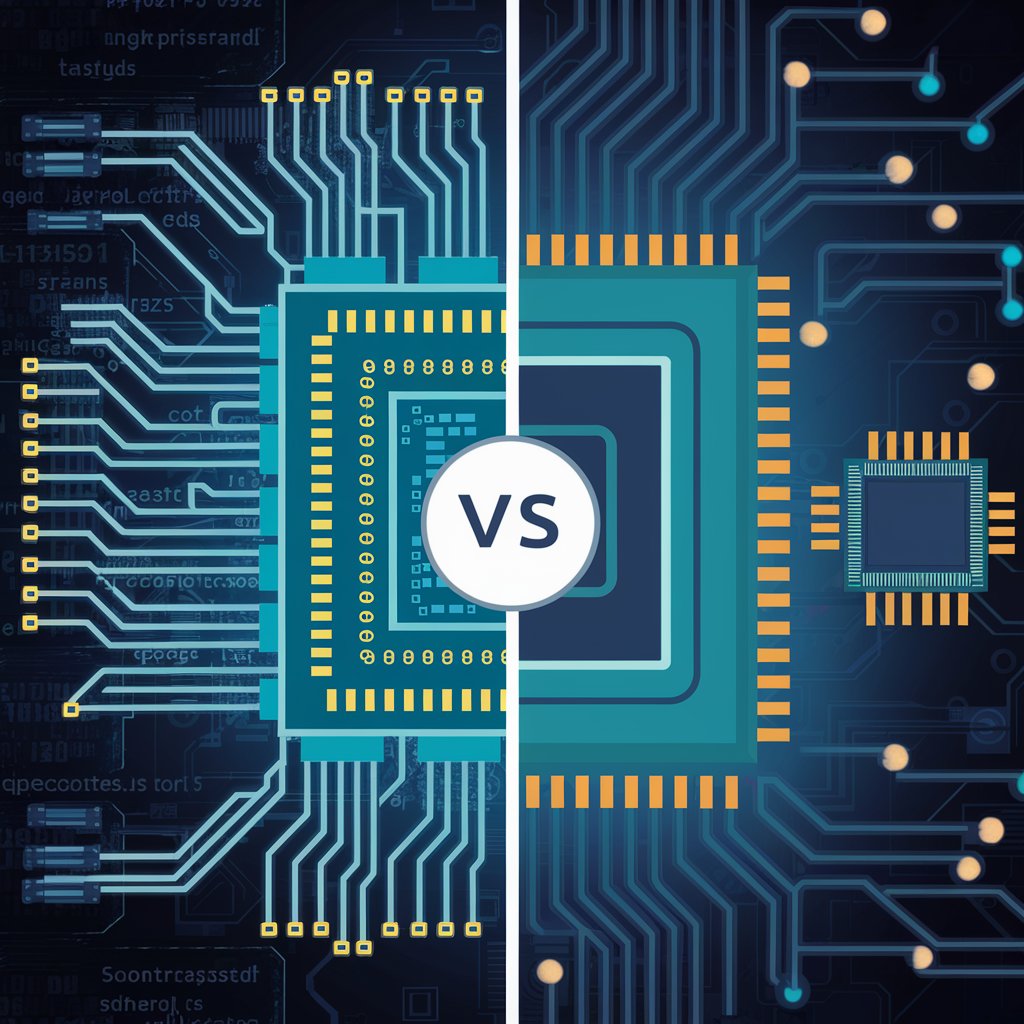Difference between microprocessor and microcontroller with an Example
Difference between microprocessor and microcontroller with an Example
 |
| Difference between microprocessor and microcontroller with an Example |
Microprocessors and microcontrollers are both integrated circuits used for processing digital data, but they have distinct differences in terms of their architecture, functionality, and applications. Here's a breakdown:
1. Microprocessor:
- A microprocessor is a central processing unit (CPU) that is designed to execute general-purpose instructions and perform arithmetic, logical, control, and input/output operations.
- Microprocessors require external components such as memory, input/output devices, and support chips to function as a complete system.
- They are commonly used in devices where flexibility and computational power are essential, such as personal computers, servers, smartphones, and other computing devices.
- Microprocessors typically do not include integrated memory or peripheral interfaces, so they rely on external components for these functions.
2. Microcontroller:
- A microcontroller is a compact integrated circuit that contains a CPU core, memory (both volatile RAM and non-volatile ROM or flash memory), input/output ports, and various peripheral devices such as timers, counters, analog-to-digital converters (ADCs), and communication interfaces (e.g., UART, SPI, I2C) all on a single chip.
- Microcontrollers are designed for embedded systems and applications where size, cost, and power efficiency are critical factors.
- They are often used in consumer electronics, automotive systems, industrial automation, home appliances, medical devices, and IoT (Internet of Things) devices.
- Microcontrollers are programmed to perform specific tasks and are optimized for real-time processing and control applications.
Microprocessor and Microcontroller with an Example
- Microprocessor Example: Intel Core i7 Processor
- The Intel Core i7 processor is a high-performance microprocessor commonly used in personal computers, laptops, and servers.
- It is designed to handle a wide range of computing tasks, from basic office applications to complex computational tasks such as gaming, multimedia editing, and software development.
- The Core i7 processor requires external components such as RAM, storage devices (e.g., SSD or HDD), and input/output devices (e.g., keyboard, mouse, display) to function as a complete computing system.
- Microcontroller Example: Arduino Uno
- The Arduino Uno is a popular microcontroller board based on the Atmega328P microcontroller chip.
- It features a CPU core, flash memory for program storage, SRAM for data storage, digital and analog input/output pins, timers, serial communication interfaces (UART, SPI, I2C), and other peripheral devices, all integrated into a single chip.
- The Arduino Uno is commonly used for prototyping and DIY electronics projects, such as robotics, home automation, sensor data logging, and interactive art installations.
- It can be programmed using the Arduino software development environment, allowing users to write and upload custom firmware to perform specific tasks and control external hardware components connected to the board.
In summary, while both microprocessors and microcontrollers are used for digital data processing, microprocessors are more suited for general-purpose computing tasks in larger systems, while microcontrollers are tailored for embedded applications requiring real-time control and interfacing with external hardware.